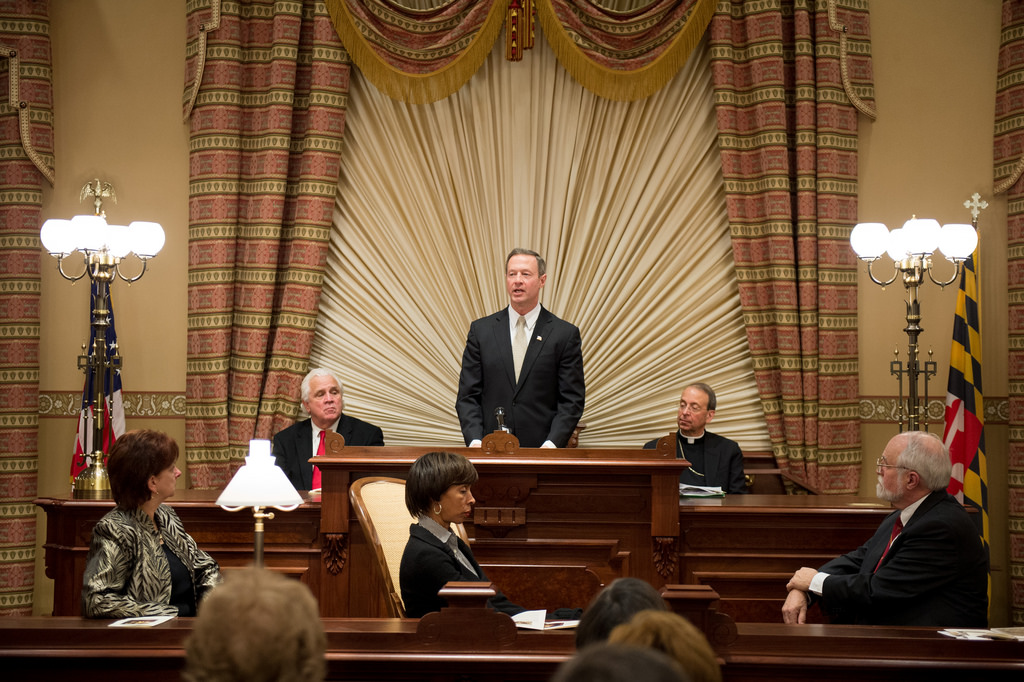For me, it happened most memorably during my first ever court appearance as a lawyer. It was a simple procedural mention in a mid-level court in central Sydney. I’d had two coffees, four hours sleep, memorised my lines like a classically-trained actor, and arrived 30 minutes early to nab the best spot.
Finally, the judge called the case. I stood up, resplendent in my double-breasted suit and slick Special Agent Fox Mulder hair (it was the mid-1990s). I approached the lectern and prepared to wow the judge with my advanced advocacy skills and sonorous voice.
“Kinnane for the Defendant,” was what I willed myself to say. Instead, from my mouth tumbled what can only be described as a cracked-yodel-croak – the sound of an adolescent hillbilly bullfrog asking his lady bullfrog (cowfrog?) out to a barn dance. My voice was shakier than a jellybaby disco floor. I struggled through the two-minute mention and sat down, mortified, certain than every other lawyer in the room was stifling a snigger.
My voice – shaky and nervous – had betrayed me!
Causes and contributors
Lots of things can cause our voices to shake, e.g.:
- too much coffee, nicotine, or other stimulants;
- nervousness; and/or
- fatigue (e.g. Louis, 2001; and Elble, 1996).
All of these things cause the autonomic system to be overstimulated. The autonomic system is part of what’s called the “peripheral nervous system”. It controls many of our “automatic” bodily functions, including our heart rate and digestion. It’s what triggers the fight or flight response, or causes otherwise spry bunnies to freeze when illuminated by headlights.
For some people, a shaky voice (or vocal tremor) is part of an underlying disease or condition, e.g. for some people with:
- Parkinson’s Disease;
- Motor Neurone Disease;
- Spinal Muscular Dystrophy;
- Spasmadic Dysphonia; and
- Essential Tremor.
For example, for people with Essential Tremor (a fairly common disorder affecting about 6.5% of people over 65 years old, and many younger people), 18-30% of them develop vocal tremor. Interestingly, about the same number of men as women develop Essential Tremor, but of those that develop vocal tremor, 74-90% are female (Sulica, 2010; Tallon-Barranco et al., 1997).
What happens and what does it sound like?
Whatever the cause(s), vocal tremor usually affects the voluntary muscles within the speech mechanism. Tremor can affect the muscles of the voice box, the tongue, the jaw, the face, the head, and/or even the respiratory system. It affects both pitch and loudness, and is often perceived as an almost rhythmic wobble in the voice.
How is it assessed?
Tremor – especially when mild – is sometimes not obvious during speech. The easiest way to test for tremor is by saying “ah” in a loud voice and then holding it for as long as you can (Brown et al., 1963). Speech pathologists can record you doing the “ah” and then look at the acoustic waveform and plots of fundamental frequency and intensity to identify a tremor and to measure its rate and magnitude.
What can you do about it?
(a) Self-help strategies
- For mild or situation-specific cases, a combination of lifestyle changes can help: e.g. reducing emotional stress (e.g. with meditation), and reducing known stimulants like caffeinated beverages and smoking, and getting more sleep (Chen & Swope, 2007).
- Interestingly, many people with Essential Tremor self-medicate themselves effectively with alcohol, which can reduce the severity of a tremor (e.g. Deuschl et al., 1998). It’s not often that you find medical journal articles advocating alcohol intake, although most sources stress that it must be taken in moderation and it poses obvious social challenges/risks, e.g. if using it for professional presentations.
- If you have a mild vocal tremor or if your voice only shakes when you are nervous, e.g. during work presentations, there are some things you can do to try to mask the effects of the tremor on your voice. For example, you can try:
- increasing your overall speech rate to at least 5 syllables a second. This sounds counter-intuitive: many people with voice tremors often start off slowing down their rate of speech, thinking it will help them control their tremor (e.g. Lundy et al., 2004). However, this can backfire as it gives your listeners more opportunity to pick up on the tremor. If the rate at which you transition from sound to sound exceeds the modulation rate of your tremor, listeners are less likely to notice a tremor (Ludlow et al., 1995);
- decreasing the length of your voiced “segments” during speech. In practice, the easiest way to do this without special training is to shorten your vowels;
- using a slightly breathier and softer voice quality (channeling your inner Marilyn Monroe). Obviously, this strategy works better for more women than men, although anyone can increase their breathiness slightly;
- to replace “filler” words, particularly voiced “ums” and “ahs” that might highlight a shaky voice with silent pauses; and
- make small adjustments in speaking pitch to see if this affects the severity of the tremor.
(b) Behavioural speech therapy
For mild-to-moderate vocal tremors, there is low-level (case study-level) evidence that speech pathologists can help some people with shaky voices to mask elements of their tremor so the tremor is not as easily noticed by listeners. This is usually achieved by training clients to implement some of the self-help strategies listed above. For example, a combination of voice therapy (to increase voice breathiness and use of gentle onsets), speech rate training (to increase speech rate and reduce average vowel length) and presentation skills training (e.g. projection techniques and use of deliberate pauses instead of “ums”) can reduce listeners’ perceptions of vocal tremor.
Note that the goal of speech therapy for people with vocal tremors is not to eliminate their tremor (which is not possible), but to use strategies to reduce listeners’ perception of tremor so that clients can improve their work – and social speech activities and participation – without fear of negative evaluation.
(c) Medical Options
When tremor is more obvious and affects daily functioning:
- a group of drugs called “beta blockers” can be prescribed by a GP. However, compared to their generally good effects at reducing tremors of the hands and limbs, beta blockers don’t seem to work very well to reduce vocal tremor (Koller et al., 1985); and
- Botox can be injected by a doctor into muscles of the voice box (specifically the thyroarytenoid and cricothyroid muscles), which causes temporary weakness of the injected muscles. This seems to help for about 3 to 6 months depending on the individual, but can have some side effects including increased breathiness and swallowing problems (Warrick et al., 2000).
For severely disabling vocal tremor caused by neurological problems or conditions, deep brain stimulation (DBS) may be an option. In this treatment, a surgeon places electrodes into the thalamus in the brain to reduce tremor symptoms. There are at least two studies that report benefit to vocal tremor using DBS (Moringlane et al., 2004; Sataloff et al., 2002).
Clinical bottom line
Lots of people have shaky voices at one time of another, e.g. when nervous, tired or overstimulated. Other people have shaky voices because of an underlying neurological condition, such as Essential Tremor. Treatment options are available, ranging from self-help strategies and speech pathology training to mask the effects of tremor (for mild cases) to brain surgery (for severely debilitating cases).
Principal source: Barkmeier-Kraemer, J., Lato, A., Wiley, K. (2011). Development of a Speech Treatment Program for a Client with Essential Vocal Tremor. Seminars in Speech and Language, 32(1), 43-57.
Image: http://tinyurl.com/znls3jj

Hi there, I’m David Kinnane.
Principal Speech Pathologist, Banter Speech & Language
Our talented team of certified practising speech pathologists provide unhurried, personalised and evidence-based speech pathology care to children and adults in the Inner West of Sydney and beyond, both in our clinic and via telehealth.


Leave a Reply